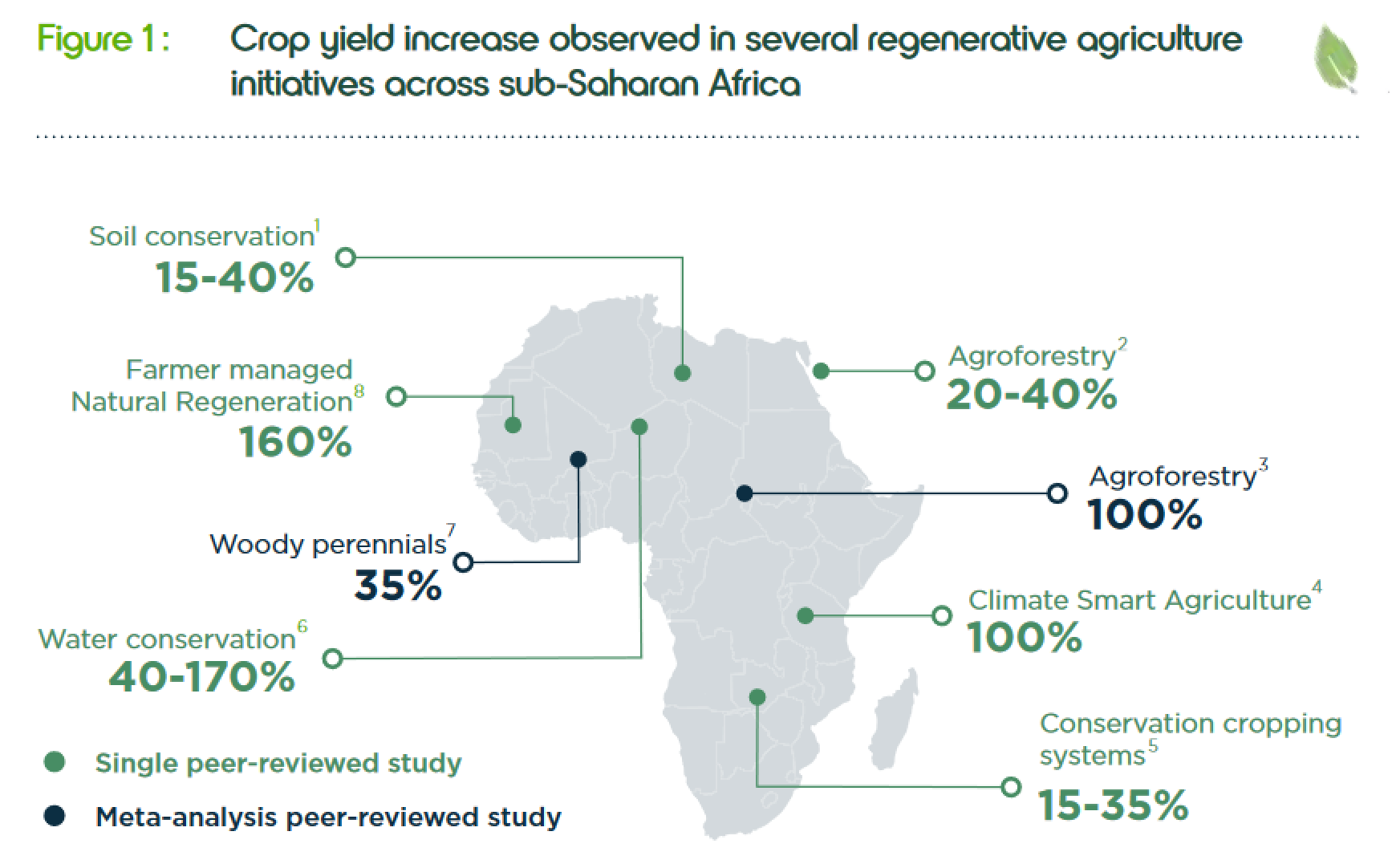Severe land degradation in Africa negatively impacts nearly half of all productive land, affecting well over 650 million people. Practices resulting in land degradation have removed almost a third of the world’s arable land from production over the last 40 years, and sub-Saharan Africa (SSA) is experiencing the brunt of this crisis. Continued inaction to improve and restore land could lead to further losses of USD 4.6 trillion over the next 15 years.
To restore degraded lands, regenerative agriculture practices such as crop diversification, tree planting, reduced tillage, mulching, and water conservation techniques spur benefits for both agribusinesses and society. These techniques improve yields via increased soil nutrient and organic content, reduced soil erosion and improved water retention. Broader environmental benefits also emerge through these practices, including more resilient ecosystems, carbon sequestration, improved water management and stronger biodiversity. Regenerative practices are comparatively cost effective, relying largely on knowledge, time and labour. These practices enable farmers to adapt to a variable climate more easily through adopting climate-smart techniques and crop choices. The natural benefits of regenerative farming also reduce dependence on expensive inputs such as irrigation, fertilisers and pesticides, cutting input costs for farmers and providing alternative fodder sources for livestock.
Businesses in SSA already reap the rewards of regenerative agriculture in programmes reaching over 100,000 farmers, with yield increases from 68% to 300%.

| Year of publication | |
| Publisher | IUCN |
| Geographic coverage | AfricaSub-Saharan Africa |
| Originally published | 16 Mar 2023 |
| Related organisation(s) | UNFCCC - United Nations Framework Convention on Climate Change |
| Knowledge service | Metadata | Global Food and Nutrition Security | Agroecology | crop diversificationSoil degradation |
| Digital Europa Thesaurus (DET) | sustainable agricultureCrop yield |
